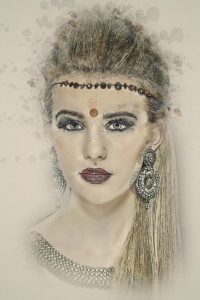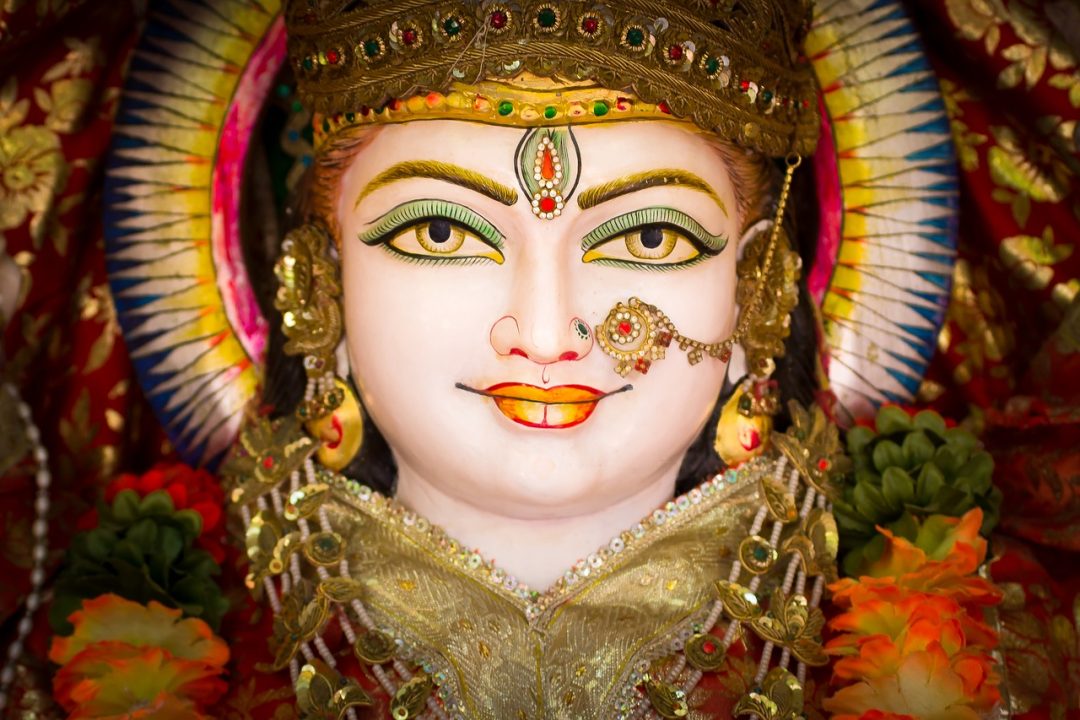It dawns to an Indian woman with a fresh bindi on her forehead. She gets up early in the morning, takes a bath and adorns herself with a bindi on her forehead and only then she greets her husband with a loving call. A bindi shows that she is a sincere and dutiful wife of her husband.
EIGHT SALIENT FEATURES OF BINDI
1) Bindi, the Marital Symbol of an Indian Woman
Bindi, pottu, kumkum, tilak, sindhur or whatever may it be called, is the mark of an Indian woman which stands for her marital status and personality. It is cultural and social protection. Indian literature depicts the significance of bindi beatifying the faces of married women. A bindi declares the culmination of a woman’s marital life. It is a sad fact that it is removed when she loses her husband in death. A woman without bindi is considered a cursed one!
2) The Health Aspect of Bindi
Bindi has much to do with a healthy point of view. Indian medical sciences, like Ayurveda and Siddha, say that the spot where the bindi is worn has much physiological importance.
 The shining bindi on the woman’s forehead between the eyes is believed to mesmerize her lover. It is a very sensitive part of the body controlling the nervous system.
The shining bindi on the woman’s forehead between the eyes is believed to mesmerize her lover. It is a very sensitive part of the body controlling the nervous system.
Yoga sciences call it the Agna Chakra which provides warmth to the pineal and pituitary glands located near the Thalamus. The Indian medial systems as well as the acupressure system state that the bindi is found to be very helpful for the good health of the brain, eyes, ears and nose. This point maintains a fine pull on the veins and nerves underneath the forehead and helps the flow of blood and also helps the marital life. Besides, it can focus the concentration and enrich one’s ability of thinking.
3) Bindi, the Mark of Culture
As stated above, bindi is the cultural ornament of an Indian woman worn on her forehead. It is the dot that the Indian woman places on her forehead as a mark of her cultural and social status. There are variations in the shapes and colors of bindi. Generally, it is round in shape and red in color. That makes it more visible to others. But bindi has undergone a lot of changes through centuries.
4) In the North, Bindi is the Marital Symbol
In North India, the bindi is generally a common mark of marital status. The brides are adorned with a whole line of red and white dots over their eyebrows on the wedding day. But on the contrary in South India, females of all ages except widows wear it as a mark of personality and decoration. Children, both male, and female, even grown-up men have bindi on their foreheads as a mark of beauty and good luck!
5) Bindi, a Mark of Valor
Tamil literature describes bindi as a mark of valor! In ancient days, before going to battles the males were applied tilak or bindi on their foreheads by their beloved ones and when they returned victoriously, they were welcomed with the same red tilak applied again! This habit is continued as a mark of achievement in some Hindu communities even today.
6) Bindi Shapes Fashion Today
Today bindi has become the mark of fashion for every Indian woman irrespective of religion or caste. Even foreigners, other than Indian origins, appreciate this bindi and have begun to apply it as a mark of beauty!
7) Bindi, a Modern Commercial Product
Ready-made bindis of different shapes and attractive colors occupy modern trade centers. They undergo many transformations today, dusted with gold powder, studded with beads and glittering stones and in different sizes. Today bindi matches the color of the dress. Bindi in various colors and designs has a lot of stories to convey.
8) Bindi A Psychological Expression of Womanhood
Bindi has a very deep meaning and significance in the psychology of women. Its cultural and social significance can definitely tell us a lot of interesting stories. Bindi is a mark of beauty and health!






